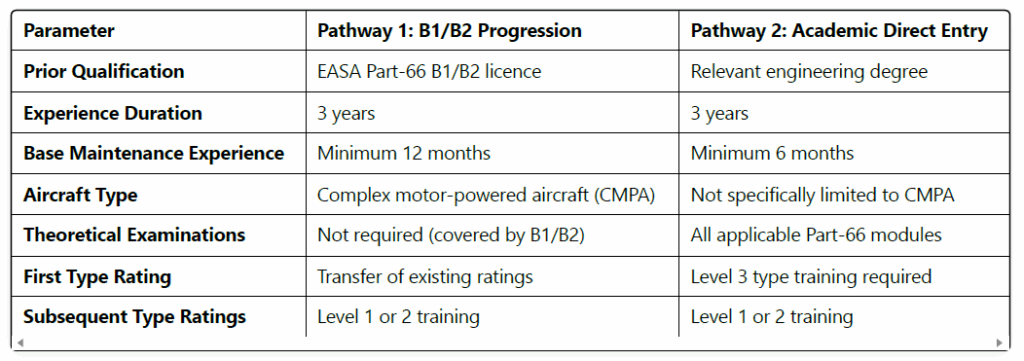- Flat 2, "Merill Court "Fuxa Street 1308 San Ġwann, Malta
Introduction
The European Union Aviation Safety Agency (EASA) Category C Aircraft Maintenance Licence represents asignificant professional milestone for maintenance engineers seeking to advance their careers in aviation.As aircraft systems grow increasingly sophisticated and base maintenance operations expand incomplexity, Category C certifying staff occupy pivotal leadership positions within the maintenanceorganization hierarchy.
This technical overview examines the regulatory framework, qualification pathways, privileges, andstrategic career advantages associated with obtaining the EASA Category C licence—an essentialcredential for professionals responsible for final aircraft certification following scheduled heavymaintenance events.
Regulatory Context and Certification Authority
The Category C licence is established under EASA Part-66 regulations, which define the harmonizedstandards for aircraft maintenance licensing across EASA member states. The licence authorizes qualifiedpersonnel to certify the completion of base maintenance operations in accordance with Part-145approved maintenance organization requirements.
Authorization Scope and Certifying Privileges
Category C licence holders are entrusted with specific certification privileges that distinguish them fromother maintenance personnel:
- Primary Authorization: Release to service of complete aircraft following base maintenance activities
- Certification Scope: Final verification and certification that all scheduled maintenance, inspections,repairs, and modifications have been properly accomplished
- Organizational Function: Oversight of the collective maintenance effort performed by B1, B2, andsupport personnel
- Compliance Responsibility: Ensuring adherence to approved maintenance data, procedures, andregulatory requirements
It is important to note that Category C staff typically do not directly perform maintenance tasksthemselves. Instead, they function in a supervisory capacity, reviewing documentation, ensuring workpackage completion, and issuing the final certificate of release to service (CRS) that authorizes theaircraft’s return to operational status.
Qualification Pathways: Dual Routes to Certification
EASA regulations establish two distinct qualification pathways for obtaining the Category C licence,accommodating professionals with different backgrounds and experience profiles:
Pathway 1: Progression from B1/B2 Licence
This pathway is designed for experienced B1 or B2 licence holders seeking to advance to Category Ccertification.
Prerequisites:
Valid EASA Part-66 B1 or B2 Aircraft Maintenance Licence
Minimum of 3 years of documented experience as certifying staff or support staff
Experience must be within a Part-145 approved maintenance organization
Experience must include work on complex motor-powered aircraft (CMPA)
At least 12 months of the required experience must involve base maintenance activities
Application Process:
Submission of EASA Form 19 to the appropriate National Aviation Authority (NAA)
Provision of documented evidence of required experience
Verification of experience by the NAA
Type ratings held on the existing B1/B2 licence will transfer to the Category C licence
Knowledge Requirements:
No additional theoretical examinations are required
Existing knowledge demonstrated for B1/B2 qualification is considered sufficient
Pathway 2: Direct Entry with Academic Qualifications
This pathway accommodates professionals with relevant academic engineering qualifications who wish toenter the aircraft maintenance certification field directly at the Category C level.
Academic Prerequisites:
Bachelor’s degree or equivalent qualification in aeronautical, mechanical, electrical, electronic, avionic,or another relevant engineering discipline
Degree must be recognized by the appropriate NAA as relevant to aircraft maintenance
Experience Requirements:
Minimum of 3 years of documented experience in an aircraft maintenance environment
Experience must include tasks directly associated with aircraft maintenance
At least 6 months of the required experience must involve base maintenance activities
Experience may be gained in environments such as CAMO, Part-145, or Part-CAO organizations
Knowledge Requirements:
Successful completion of examinations in all applicable modules defined in Appendix I of Part-66
Potential for academic credits based on degree content, subject to NAA evaluation
Submission of academic transcripts and course content for NAA assessment of potential modulecredits
Type Rating Requirements
Category C licence holders must obtain appropriate type ratings for each aircraft model they will certifyfollowing base maintenance. Type rating requirements differ depending on whether it is the first orsubsequent type certification:
First Type Rating:
Must complete a Level 3 approved theoretical type training course
Level 3 training provides comprehensive systems knowledge and organizational maintenanceprocedures
On-the-job training (OJT) is not mandatory for Category C personnel, unlike B1/B2 licence holders
Subsequent Type Ratings:
May be obtained through Level 1 (familiarization) or Level 2 (detailed) training
Simplified requirements may apply for similar aircraft types or those within the same operationalgroup
Type rating approval is subject to NAA verification and authorization
Professional Development and Career Implications
The Category C licence represents more than regulatory authorization; it establishes the holder as asenior technical authority within the maintenance organization with several professional advantages:
- Career Advancement: Positions Category C holders for senior roles in quality assurance,maintenance planning, and technical management
- Increased Compensation: Generally commands higher remuner
- The Category C licence represents more than regulatory authorization; it establishes the holder as asenior technical authority within the maintenance organization with several professional advantages:
- Career Advancement: Positions Category C holders for senior roles in quality assurance,maintenance planning, and technical management
- Increased Compensation: Generally commands higher remuneration commensurate with increasedresponsibility
- Global Recognition: Provides internationally recognized credentials within EASA member states andcountries with bilateral agreements
- Organizational Value: Enables maintenance organizations to perform and certify base maintenanceoperations
- Professional Versatility: Facilitates transition between line and base maintenance environments
Comparative Requirements Summary

Conclusion
The EASA Category C Aircraft Maintenance Licence represents a significant professional achievement formaintenance engineers. As the aviation industry continues to evolve with more complex aircraft systemsand maintenance procedures, Category C certifying staff fulfill an essential role in ensuring airworthinesscompliance and safety standards.
Whether progressing from a B1/B2 background or entering directly with academic qualifications, aspiringCategory C professionals must carefully navigate the regulatory requirements, gain appropriateexperience, and develop the comprehensive technical knowledge needed to assume this criticalresponsibility in aviation maintenance.
For maintenance professionals seeking career advancement, enhanced authority, and increasedprofessional recognition, the Category C licence offers a structured pathway toward achieving theseobjectives within the regulated aviation maintenance environment.

